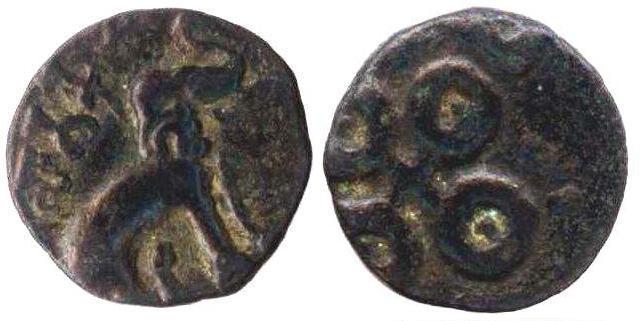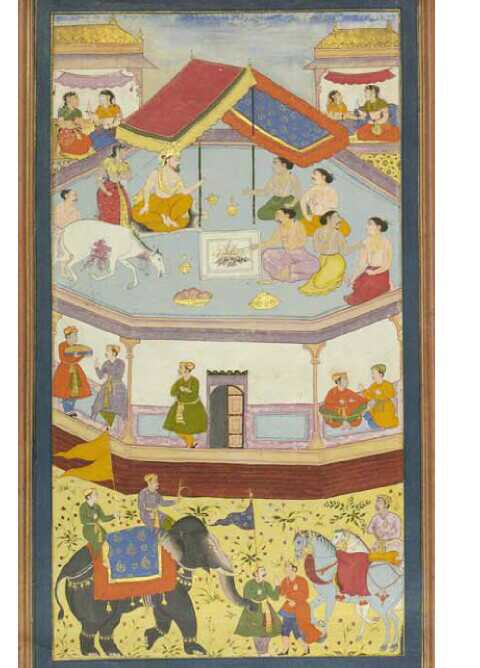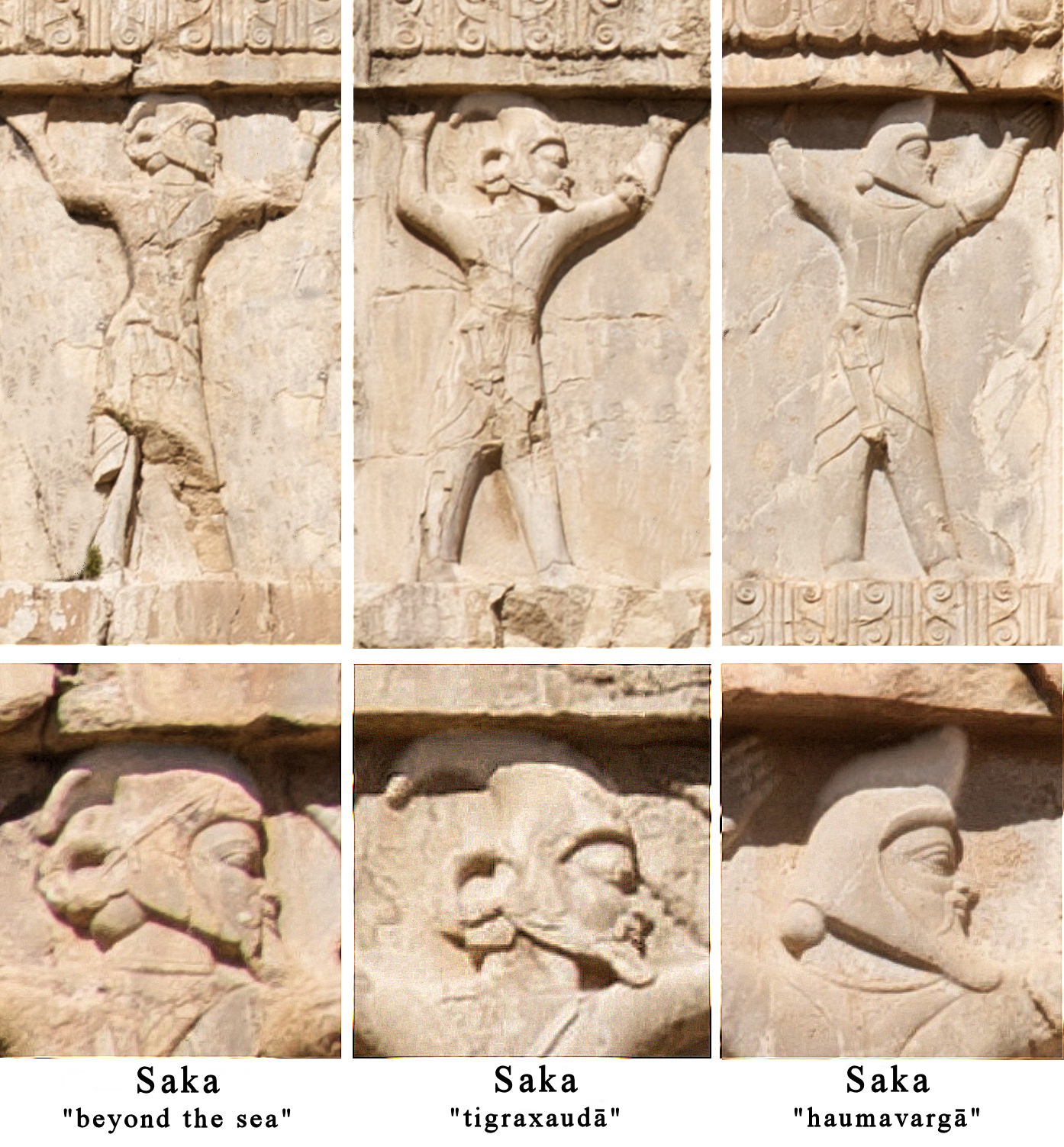|
Shalivahana
Shalivahana (IAST: ŇöńĀlivńĀhana) was a legendary emperor of ancient India, who is said to have ruled from Pratishthana (present-day Paithan, Maharashtra). He is believed to be based on a Satavahana king (or kings). There are several contradictory legends about him. Most legends associate him with another legendary emperor, Vikramaditya of Ujjain, in some way. In some legends, he is presented as an enemy of Vikramaditya; in other legends, he is named as a grandson of Vikramaditya; and in a few legends, the title Vikramaditya is applied to the ruler of Pratishthana. According to some historically inaccurate legends, his birth or one of his battle victories marked the beginning of the Shalivahana calendar era, which is another name for the Saka era. Legends ''Viracharita'' Ananta's heroic poem ''Viracharita'' (12th century CE) mentions Shalivahana as a rival of the king Vikramaditya of Ujjain. According to it, Shalivahana defeated and killed Vikramaditya, and then ruled fr ... [...More Info...] [...Related Items...] OR: [Wikipedia] [Google] [Baidu] |
Vikramaditya
Vikramaditya (Sanskrit: ŗ§Ķŗ§Ņŗ§ēŗ•ćŗ§įŗ§ģŗ§ĺŗ§¶ŗ§Ņŗ§§ŗ•ćŗ§Į IAST: ') was a legendary king as mentioned in ancient Indian literature, featuring in traditional stories including those in ''Baital Pachisi, Vetala Panchavimshati'' and ''Singhasan Battisi''. Many describe him as ruler with his capital at Ujjain (Pataliputra or Pratishthana in a few stories). "''Vikramaditya''" was also a common title adopted by several List of Indian monarchs, monarchs in ancient and medieval India, and the Vikramaditya legends may be embellished accounts of different kings (particularly Chandragupta II). According to popular tradition, Vikramaditya began the Vikram Samvat era in 57 BCE after defeating the Shakas, and those who believe that he is based on a historical figure place him around the first century BCE. However, this era is identified as "''Vikrama Samvat''" after the ninth century CE. Nepal uses Vikram Samvat, Bikram Sambat named after him, 57 years ahead of Gregorian calendar, as state ... [...More Info...] [...Related Items...] OR: [Wikipedia] [Google] [Baidu] |
Saka Era
The Shaka era (IAST: Ňöaka, ŇöńĀka) is a historical Hindu calendar era (year numbering), the epoch (its year zero) of which corresponds to Julian year 78. The era has been widely used in different regions of the Indian subcontinent as well as in Southeast Asia. According to the Government of India, it is referred as the Shalivahana Era (IAST: ŇöńĀlivńĀhana). History The origin of the Shaka era is highly controversial. There are two Shaka era systems in scholarly use, one is called ''Old Shaka Era'', whose epoch is uncertain, probably sometime in the 1st millennium BCE because ancient Buddhist and Jaina inscriptions and texts use it, but this is a subject of dispute among scholars. The other is called ''Saka Era of 78 CE'', or simply ''Saka Era'', a system that is common in epigraphic evidence from southern India. A parallel northern India system is the ''Vikrama Era'', which is used by the Vikrami calendar linked to Vikramaditya. The beginning of the Shaka era is now widel ... [...More Info...] [...Related Items...] OR: [Wikipedia] [Google] [Baidu] |
Satavahana
The Satavahanas (; ''SńĀdavńĀhana'' or ''SńĀtavńĀhana'', IAST: ), also referred to as the Andhras (also ''Andhra-bhŠĻõtyas'' or ''Andhra-jatiyas'') in the Puranas, were an ancient Indian dynasty. Most modern scholars believe that the Satavahana rule began in the late 2nd century BCE and lasted until the early 3rd century CE, although some assign the beginning of their rule to as early as the 3rd century BCE based on the Puranas, but uncorroborated by archaeological evidence. The Satavahana kingdom mainly comprised the present-day Andhra Pradesh, Telangana, and Maharashtra. At different times, their rule extended to parts of modern Gujarat, Madhya Pradesh, and Karnataka. The dynasty had different capital cities at different times, including Pratishthana (Paithan) and Amaravati ( Dharanikota). The origin of the dynasty is uncertain, but according to the Puranas, their first king overthrew the Kanva dynasty. In the post- Maurya era, the Satavahanas established peace in the Dec ... [...More Info...] [...Related Items...] OR: [Wikipedia] [Google] [Baidu] |
Bhoja
Bhoja was the Paramara dynasty, Paramara king of Malwa from 1010 until his death in 1055. He ruled from Dhara (city), Dhara (modern Dhar), and Military career of Bhoja, fought wars with nearly all his neighbours in attempts to extend his kingdom, with varying degrees of success. At its zenith, his empire extended from Chittorgarh Fort, Chittor in the north to upper Konkan in the south, and from the Sabarmati River in the west to Vidisha in the east. Because of his patronage of scholars, Bhoja became one of the most celebrated kings in Indian history. After his death, he came to be featured in several legends as a righteous scholar-king. The body of legends clustered around him is comparable to that of the Emperor Vikramaditya. Bhoja is best known as a patron of arts, literature, and sciences. The establishment of the Bhoj Shala, a centre for Sanskrit studies, is attributed to him. He was a polymath, and several books covering a wide range of topics are attributed to him. He i ... [...More Info...] [...Related Items...] OR: [Wikipedia] [Google] [Baidu] |
Muhammad
Muhammad (8 June 632 CE) was an Arab religious and political leader and the founder of Islam. Muhammad in Islam, According to Islam, he was a prophet who was divinely inspired to preach and confirm the tawhid, monotheistic teachings of Adam in Islam, Adam, Noah in Islam, Noah, Abraham in Islam, Abraham, Moses in Islam, Moses, Jesus in Islam, Jesus, and other Prophets and messengers in Islam, prophets. He is believed to be the Seal of the Prophets in Islam, and along with the Quran, his teachings and Sunnah, normative examples form the basis for Islamic religious belief. Muhammad was born in Mecca to the aristocratic Banu Hashim clan of the Quraysh. He was the son of Abdullah ibn Abd al-Muttalib and Amina bint Wahb. His father, Abdullah, the son of tribal leader Abd al-Muttalib ibn Hashim, died around the time Muhammad was born. His mother Amina died when he was six, leaving Muhammad an orphan. He was raised under the care of his grandfather, Abd al-Muttalib, and paternal ... [...More Info...] [...Related Items...] OR: [Wikipedia] [Google] [Baidu] |
Mleccha
Mleccha () is a Sanskrit term referring to those of an incomprehensible speech, foreigners or invaders deemed distinct and separate from the Vedic tribes. In Vedic Brahmanical discourse, the term is used to refer to foreigners (anńĀryans) who are considered outside the realm of Vedic dharma. ''Mleccha'' was traditionally applied to denote foreigners or outsiders who did not belong to the Vedic cultural milieu, regardless of their race or skin colour. These individuals were considered outside the Varna system and the ritualistic framework of Vedic society. Historical sources identify various groups as mlecchas, including the ŇöńĀkas, Huns, Chinese, Greeks, Kambojas, Pahlavas, Bahlikas, Rishikas, and Daradas. Other groups designated as mlecchas include the Barbaras, Kiratas, Paradas, Saka-Greeks, Indo-Greeks, Pulindas, and Scythians. Further identifications include the Kushans, Kinnaras, Tusharas, and Nishadas. The designation further extends to include groups ... [...More Info...] [...Related Items...] OR: [Wikipedia] [Google] [Baidu] |
Hunas
Hunas or Huna (Middle Brahmi script: ''HŇęŠĻáńĀ'') was the name given by the ancient Indians to a group of Central Asian tribes who, via the Khyber Pass, entered the Indian subcontinent at the end of the 5th or early 6th century. The Hunas occupied areas as far south as Eran and Kausambi, greatly weakening the Gupta Empire. The Hunas were ultimately defeated by a coalition of Indian princes that included an Indian king Yasodharman and the Gupta emperor, Narasimhagupta. They defeated a Huna army and their ruler Mihirakula in 528 CE and drove them out of India. The Guptas are thought to have played only a minor role in this campaign. The Hunas are thought to have included the Xionite and/or Hephthalite, the Kidarites, the Alchon Huns (also known as the Alxon, Alakhana, Walxon etc.) and the Nezak Huns. Such names, along with that of the Harahunas (also known as the Halahunas or Harahuras) mentioned in Hindu texts, have sometimes been used for the Hunas in general; while these ... [...More Info...] [...Related Items...] OR: [Wikipedia] [Google] [Baidu] |
Jesus Christ
Jesus (AD 30 or 33), also referred to as Jesus Christ, Jesus of Nazareth, and many Names and titles of Jesus in the New Testament, other names and titles, was a 1st-century Jewish preacher and religious leader. He is the Jesus in Christianity, central figure of Christianity, the Major religious groups, world's largest religion. Most Christians consider Jesus to be the Incarnation (Christianity), incarnation of God the Son and awaited Messiah#Christianity, messiah, or Christ (title), Christ, a descendant from the Davidic line that is prophesied in the Old Testament. Virtually all modern scholars of classical antiquity, antiquity agree that Historicity of Jesus, Jesus existed historically. Accounts of Life of Jesus, Jesus's life are contained in the Gospels, especially the four canonical Gospels in the New Testament. Since the Age of Enlightenment, Enlightenment, Quest for the historical Jesus, academic research has yielded various views on the historical reliability of t ... [...More Info...] [...Related Items...] OR: [Wikipedia] [Google] [Baidu] |
Ashvamedha
The Ashvamedha () was a horse sacrifice ritual followed by the Ňörauta tradition of Vedic religion. It was used by ancient Indian kings to prove their imperial sovereignty: a horse accompanied by the king's warriors would be released to wander for a year. In the territory traversed by the horse, any rival could dispute the king's authority by challenging the warriors accompanying it. After one year, if no enemy had managed to kill or capture the horse, the animal would be guided back to the king's capital. It would be then sacrificed, and the king would be declared as an undisputed sovereign. The ritual is recorded as being held by many ancient rulers, but apparently only by two in the last thousand years. The most recent ritual was in 1741, the second one held by Maharajah Jai Singh II of Jaipur. The original Vedic religion had evidently included many animal sacrifices, as had the various folk religions of India. Brahminical Hinduism had evolved opposing animal sacrifices, ... [...More Info...] [...Related Items...] OR: [Wikipedia] [Google] [Baidu] |
International Alphabet Of Sanskrit Transliteration
The International Alphabet of Sanskrit Transliteration (IAST) is a transliteration scheme that allows the lossless romanisation of Indic scripts as employed by Sanskrit and related Indic languages. It is based on a scheme that emerged during the 19th century from suggestions by Charles Trevelyan, William Jones, Monier Monier-Williams and other scholars, and formalised by the Transliteration Committee of the Geneva Oriental Congress, in September 1894. IAST makes it possible for the reader to read the Indic text unambiguously, exactly as if it were in the original Indic script. It is this faithfulness to the original scripts that accounts for its continuing popularity amongst scholars. Usage Scholars commonly use IAST in publications that cite textual material in Sanskrit, PńĀŠł∑i and other classical Indian languages. IAST is also used for major e-text repositories such as SARIT, Muktabodha, GRETIL, and sanskritdocuments.org. The IAST scheme represents more than a centu ... [...More Info...] [...Related Items...] OR: [Wikipedia] [Google] [Baidu] |
Mahmud Of Ghazni
Abu al-Qasim Mahmud ibn Sabuktigin (; 2 November 971 ‚Äď 30 April 1030), usually known as Mahmud of Ghazni or Mahmud Ghaznavi (), was Sultan of the Ghaznavid Empire, ruling from 998 to 1030. During his reign and in medieval sources, he is usually known by his laqab, honorific title Yamin al-Dawla (, ). At the time of his death, his kingdom had been transformed into an extensive military empire, which extended from northwestern Iran proper to the Punjab in the Indian subcontinent, Khwarazm in Transoxiana, and Makran. Highly Persianization, Persianized, Mahmud continued the bureaucratic, political, and cultural customs of his predecessors, the Samanids. He established the ground for a future Persianate society, Persianate state in Punjab, particularly centered on Lahore, a city he conquered. His capital of Ghazni evolved into a significant cultural, commercial, and intellectual centre in the Islamic world, almost rivalling the important city of Baghdad. The capital appealed to many ... [...More Info...] [...Related Items...] OR: [Wikipedia] [Google] [Baidu] |
Ňöaka
The Saka, old , mod. , ), Shaka (Sanskrit ( BrńĀhmńę): , , ; Sanskrit (DevanńĀgarńę): , ), or Sacae (Ancient Greek: ; Latin: were a group of nomadic Eastern Iranian peoples who lived in the Eurasian Steppe and the Tarim Basin from the 9th century BC to the 5th century AD. "Modern scholars have mostly used the name Saka to refer specifically to Iranians of the Eastern Steppe and Tarim Basin" "In modern scholarship the name 'Sakas' is reserved for the ancient tribes of northern and eastern Central Asia and Eastern Turkestan to distinguish them from the related Massagetae of the Aral region and the Scythians of the Pontic steppes. These tribes spoke Iranian languages, and their chief occupation was nomadic pastoralism." The Saka were closely related to the Scythians, and both groups formed part of the wider Scythian cultures. However, they are distinguished from the Scythians by their specific geographical and cultural traits. The Saka languages formed part of the Scythi ... [...More Info...] [...Related Items...] OR: [Wikipedia] [Google] [Baidu] |









